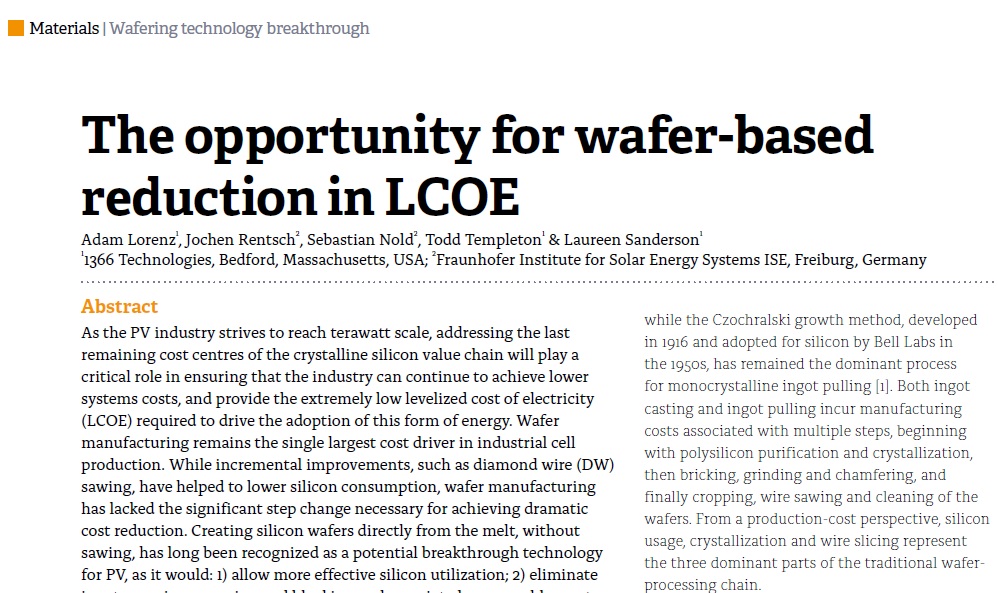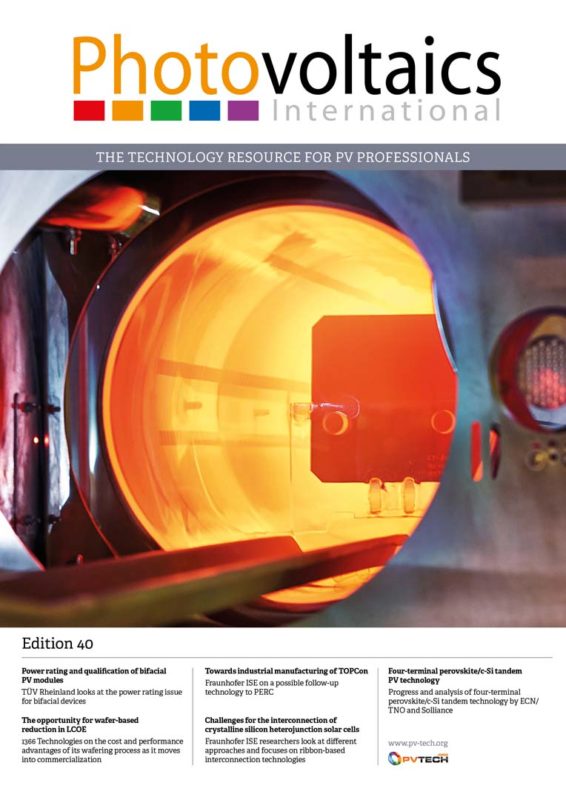By Adam Lorenz, 1366 Technologies, Bedford, Massachusetts, USA; Jochen Rentsch, Fraunhofer Institute for Solar Energy Systems ISE, Freiburg, Germany; Sebastian Nold, Fraunhofer Institute for Solar Energy Systems ISE, Freiburg, Germany; Todd Templeton, 1366 Technologies, Bedford, Massachusetts, USA; Laureen Sanderson, 1366 Technologies, Bedford, Massachusetts, USA
As the PV industry strives to reach terawatt scale, addressing the last remaining cost centres of the crystalline silicon value chain will play a critical role in ensuring that the industry can continue to achieve lower systems costs, and provide the extremely low levelized cost of electricity (LCOE) required to drive the adoption of this form of energy. Wafer manufacturing remains the single largest cost driver in industrial cell production. While incremental improvements, such as diamond wire (DW) sawing, have helped to lower silicon consumption, wafer manufacturing has lacked the significant step change necessary for achieving dramatic cost reduction.



